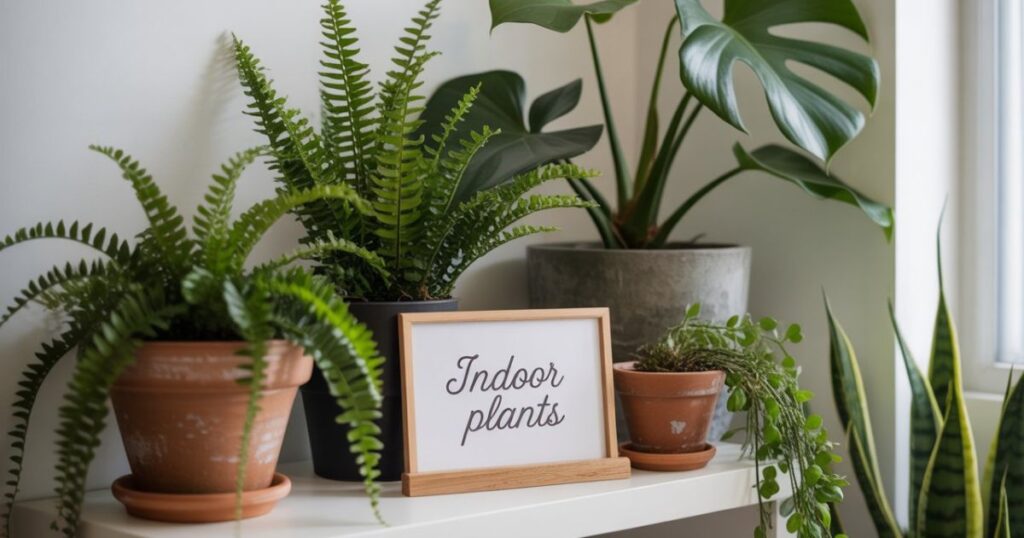
I remember the day I brought home my first snake plant. My tiny apartment felt stuffy, I was stressed from work, and honestly, the space looked lifeless. Within a few weeks, something shifted. The air felt fresher, my mornings were calmer, and I actually looked forward to checking on my green companion. Turns out, I wasn’t imagining it.
Studies show that indoor plants do far more than decorate — they act as natural air filters, reduce stress, and even support your immune system. Whether you need help with focus, sleep, or cleaner air, these oxygen-producing plants and easy houseplants for beginners offer powerful indoor gardening benefits for any living space
Why Indoor Plants Are More Than Just Decor
The beauty of a plant sitting on your windowsill hides the powerful work it’s doing behind the scenes. Plants aren’t just pretty to look at—they’re nature’s silent health workers. While improving your home’s look, they help your body recover from stress, clean your indoor air, and bring peace to your mind. That’s because plants affect the parasympathetic nervous system, which controls rest and relaxation. Studies show that even a small plant can serve as a positive distraction, lowering heart rate and improving mental well-being.
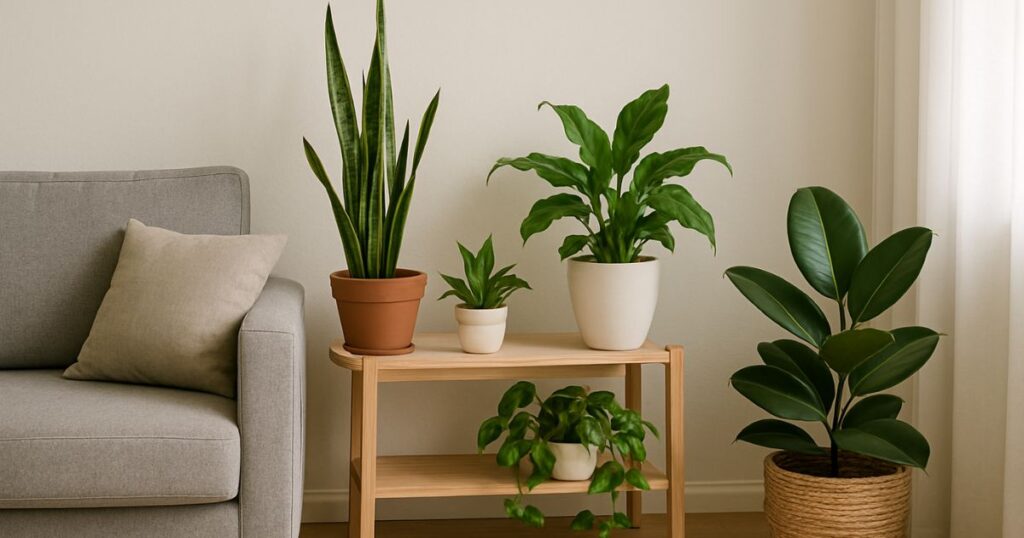
For Americans living in closed, air-conditioned spaces, these benefits matter more than ever. Adding stress-reducing greenery into your space doesn’t only make it beautiful—it also makes it healthier. From reducing dry air symptoms to fighting indoor pollutants like formaldehyde, benzene, trichloroethylene, the right plants create a safer and more soothing atmosphere in any room.
How Indoor Plants Improve Your Health (Backed by Research)
Plants clean your air through photosynthesis, the process where they absorb carbon dioxide and release oxygen. But it gets even better. Some plants absorb harmful toxins from the air through tiny pores on their leaves called stomata. This means you’re breathing in fewer chemicals and more oxygen every day. According to the NASA Clean Air Study, plants like the Spider Plant and Peace Lily remove chemicals like formaldehyde, benzene, trichloroethylene—which are common in furniture, carpets, and paints.

Research from top universities also shows that being around greenery lowers cortisol levels, a stress hormone. This can help reduce anxiety, boost immunity, and support faster recovery from illness. In hospitals and homes, the presence of plants has been linked to quicker healing and reduced use of pain medication.
Best Air-Purifying Indoor Plants for a Cleaner Home
Some plants are champions at air purification. These houseplants that clean air remove harmful pollutants while adding beauty to your home. Here are a few of the best options:
| Plant Name | Toxins Removed | Best Room | Extra Benefit |
| Snake Plant | Formaldehyde, benzene | Bedroom | Releases oxygen at night |
| Peace Lily | Trichloroethylene, ammonia | Living Room | Helps reduce mold spores |
| Spider Plant | Formaldehyde, xylene | Kitchen | Great for beginners |
| English Ivy | Mold particles, benzene | Bathroom | Fights airborne mold |
| Bamboo Palm | Carbon monoxide, formaldehyde | Hallway | Adds humidity to dry air |
These plants act as natural air filters, cleaning your home silently and constantly. They’re perfect for homes with poor ventilation or anyone wanting better indoor gardening benefits.
Plants That Lower Stress, Anxiety, and Cortisol Levels
Living in fast-paced environments leads to stress, anxiety, and sometimes burnout. The good news is, certain plants help restore calm by reducing cortisol levels and triggering the parasympathetic nervous system. When you spend time near plants for anxiety, your body relaxes, your heart rate slows, and your thoughts become clearer.

Healing houseplants like Lavender, Jasmine, and Aloe Vera are known for their calming scents and soothing energy. Jasmine’s scent can help improve your mood, while Aloe Vera purifies the air and is good for the skin too. These stress-reducing greenery additions are ideal for bedrooms, reading corners, and meditation spaces.
Plants That Help You Focus, Sleep Better, and Work Smarter
If you work from home or study a lot, certain plants can help boost your cognitive performance. Greenery near your desk helps reduce mental fatigue and increases alertness. Some of the best plants for workspaces include ZZ Plant, Pothos, and Areca Palm. They’re not just decorative—they’re mind-boosters.

Want better rest? Try Snake Plant or Lavender in your bedroom. These are plants for better sleep, known to release oxygen at night and improve relaxation. Adding just one pot near your bed can improve sleep quality, making you wake up fresher and calmer.
Healing Plants for Specific Needs (Skin, Breathing, Mood, Pets)
Every plant has a unique healing trait. Aloe Vera is great for burns and dry skin. Peppermint is good for digestion and boosts energy. Eucalyptus helps with breathing, especially during colds or allergies. These are just a few examples of plants that improve health based on your specific needs.

If you have pets, it’s important to choose pet-safe indoor plants. Bamboo Palm, Spider Plant, and Areca Palm are all safe indoor plants for pets and also offer air purification benefits. Avoid plants that can cause plant toxicity issues like Peace Lily or Dieffenbachia if you have cats or dogs around.
The Best Indoor Plants for Beginners (Easy-Care Stars)
If you’re new to indoor gardening, don’t worry. There are many easy houseplants for beginners that don’t need much attention. These beginner-friendly plants can survive if you forget to water them or if your room doesn’t get much sunlight. Great starter plants include Snake Plant, ZZ Plant, and Pothos.
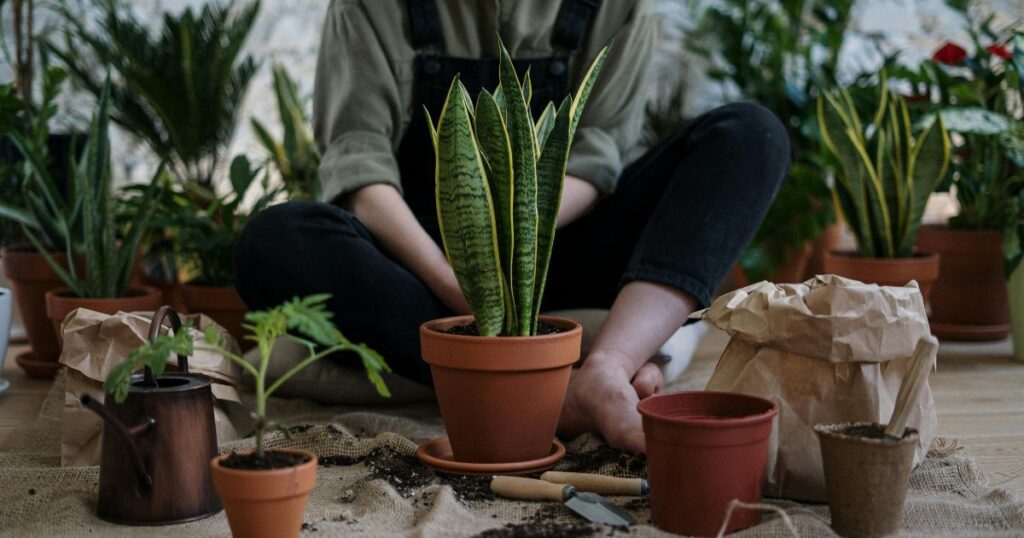
These low maintenance plants require watering only once every 7–10 days and can adapt to many light conditions. Just remember to check for soil drainage, avoid overwatering, and follow a simple repotting schedule every 1–2 years. These steps will keep your plants happy and healthy.
Low Light? No Problem – Best Plants for Dark Corners
Not every home has bright windows, and that’s okay. You can still grow low-light indoor plants that thrive in shade. Some of the best choices include Cast Iron Plant, Peace Lily, and Chinese Evergreen. These are perfect bathroom plants or for corners with little sunlight.
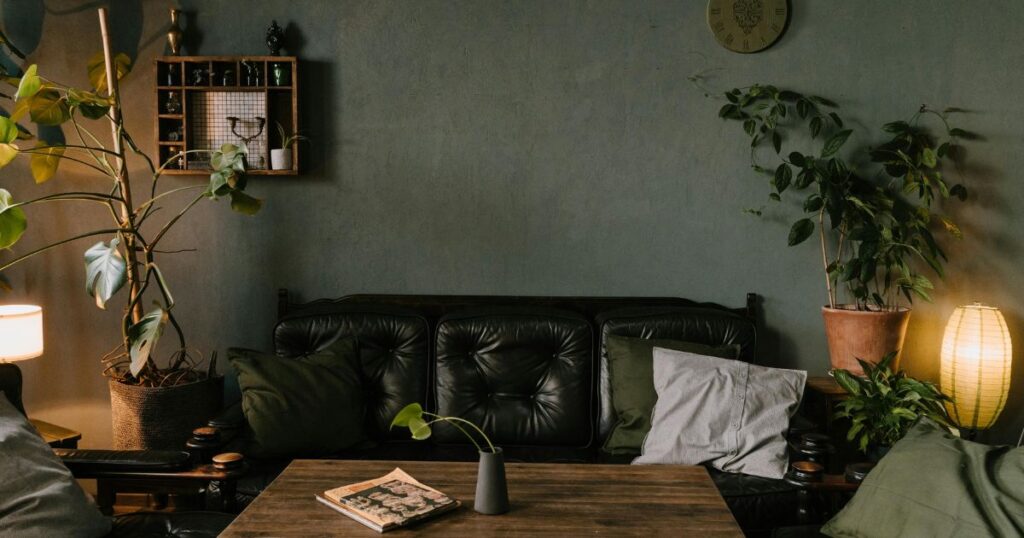
Even with minimal light, these plants grow slowly but steadily. Use mirrors to reflect light or install soft grow lights if needed. They continue to act as natural air filters while filling your room with life.
Indoor Plant Care 101: Light, Watering, Soil & Potting
Taking care of plants is easier than you think. The basics of indoor plant care tips start with understanding light. Know if your plant needs full sun, partial light, or shade. Water when the top inch of soil feels dry, but don’t let it get soggy—overwatering is the number one killer.
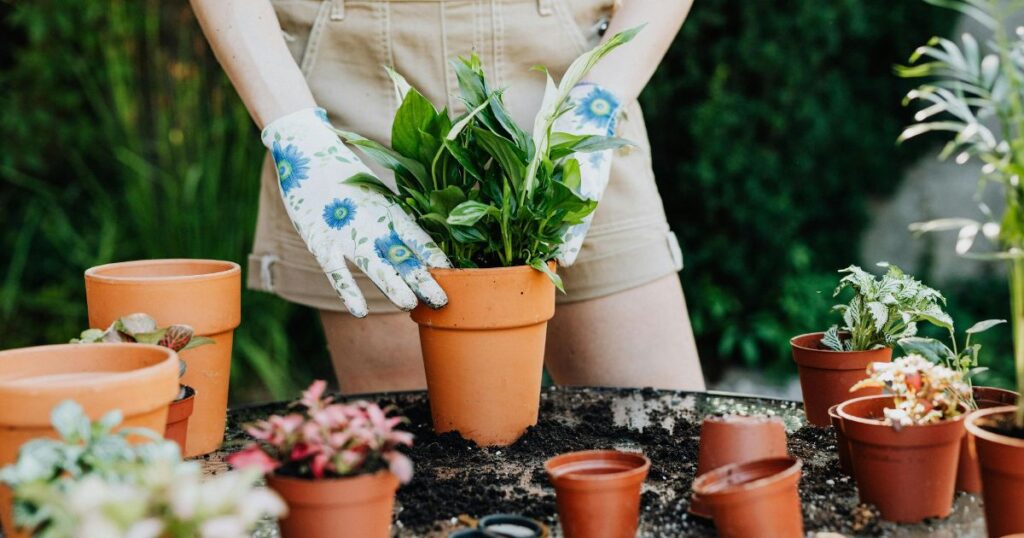
Choose pots with drainage holes, and use soil suited for each plant. Re-pot when your plant becomes root-bound or starts outgrowing its container. Following a simple repotting schedule every 12–18 months will help your plant thrive. Also, watch for changes in leaves or growth—they’re your plant’s way of talking to you.
Are These Plants Safe for Pets and Children?
Safety is a big concern in homes with kids or animals. Always check whether your houseplants are child-safe plants and pet-safe indoor plants. Some plants like Snake Plant or Philodendron can cause stomach issues if chewed by pets or toddlers.
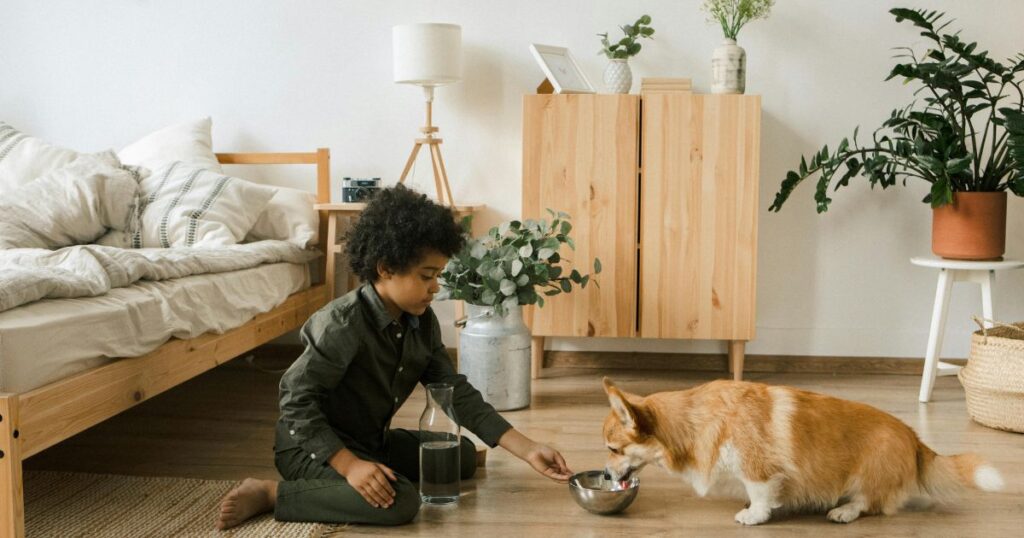
Stick to safer options like Spider Plant, Areca Palm, or Peperomia. If you have toxic plants, place them on high shelves or inside closed rooms. Keep the plant toxicity risks low while still enjoying the benefits of healing houseplants.
FAQs About Indoor Plants and Health Benefits
Do plants really clean indoor air?
Yes. Through photosynthesis and stomata, they absorb toxins and release oxygen.
Are artificial plants just as good? No. Only real plants offer air purification and mood-boosting effects.
Can I grow plants in my bathroom?
Yes, bathroom plants like Ferns and Ivy do great in humidity.
What’s the best plant for beginners?
Start with easy houseplants for beginners like Pothos or Snake Plant.
Which plants are best for anxiety?
Try plants for anxiety like Lavender, Jasmine, or Aloe. They lower cortisol levels and calm the mind.
How often should I water my plant?
Follow the rule: water when the soil is dry one inch below the surface.
